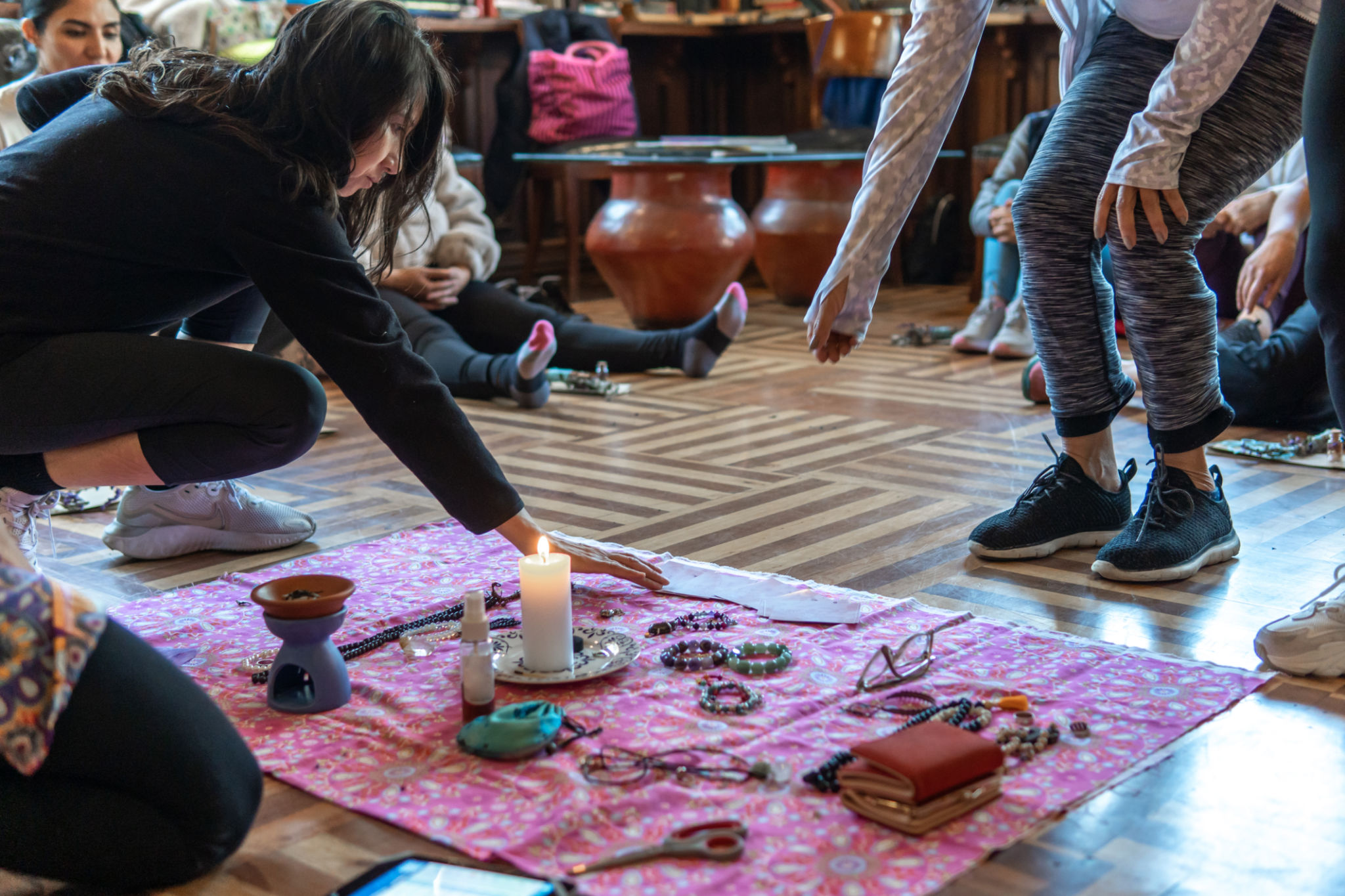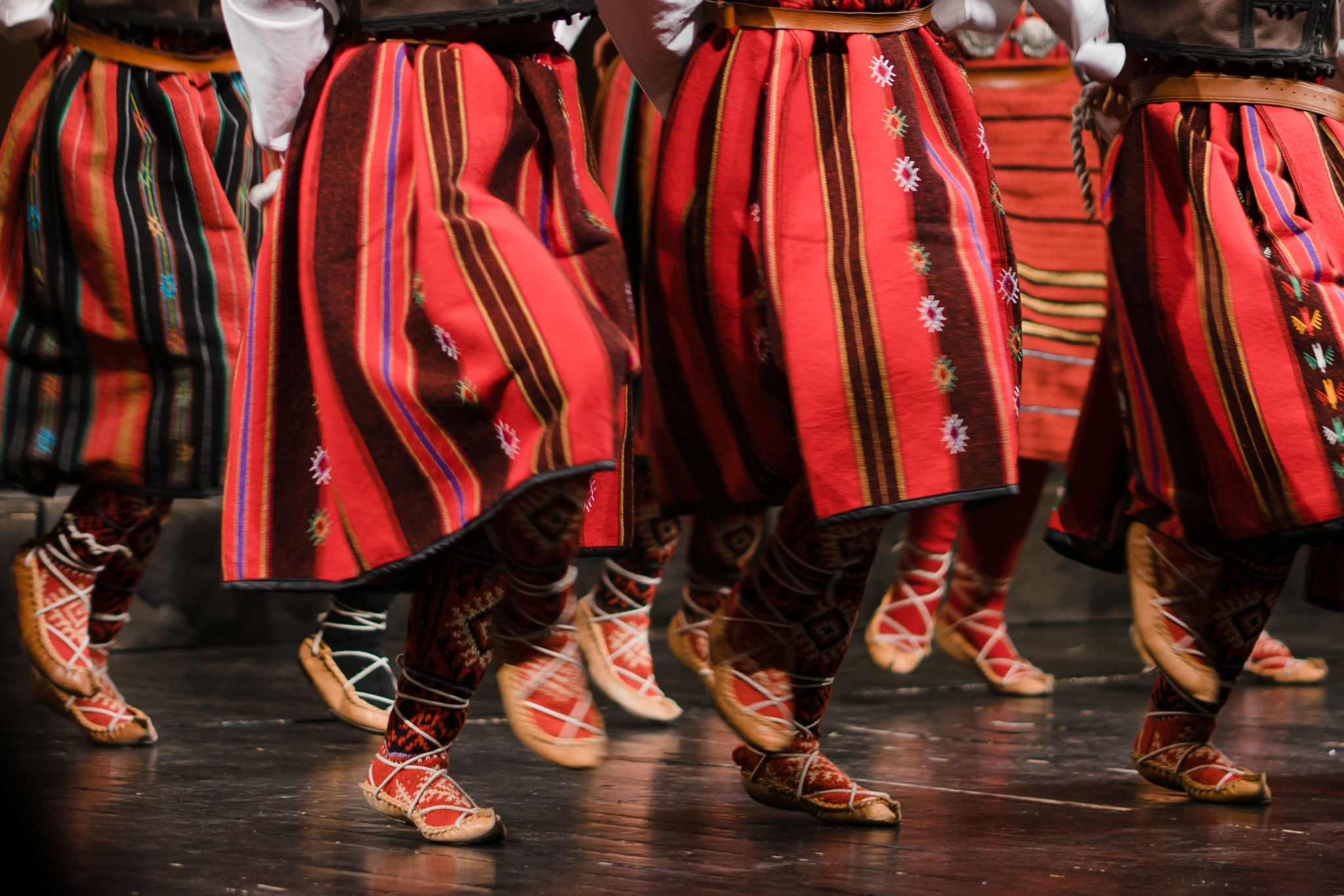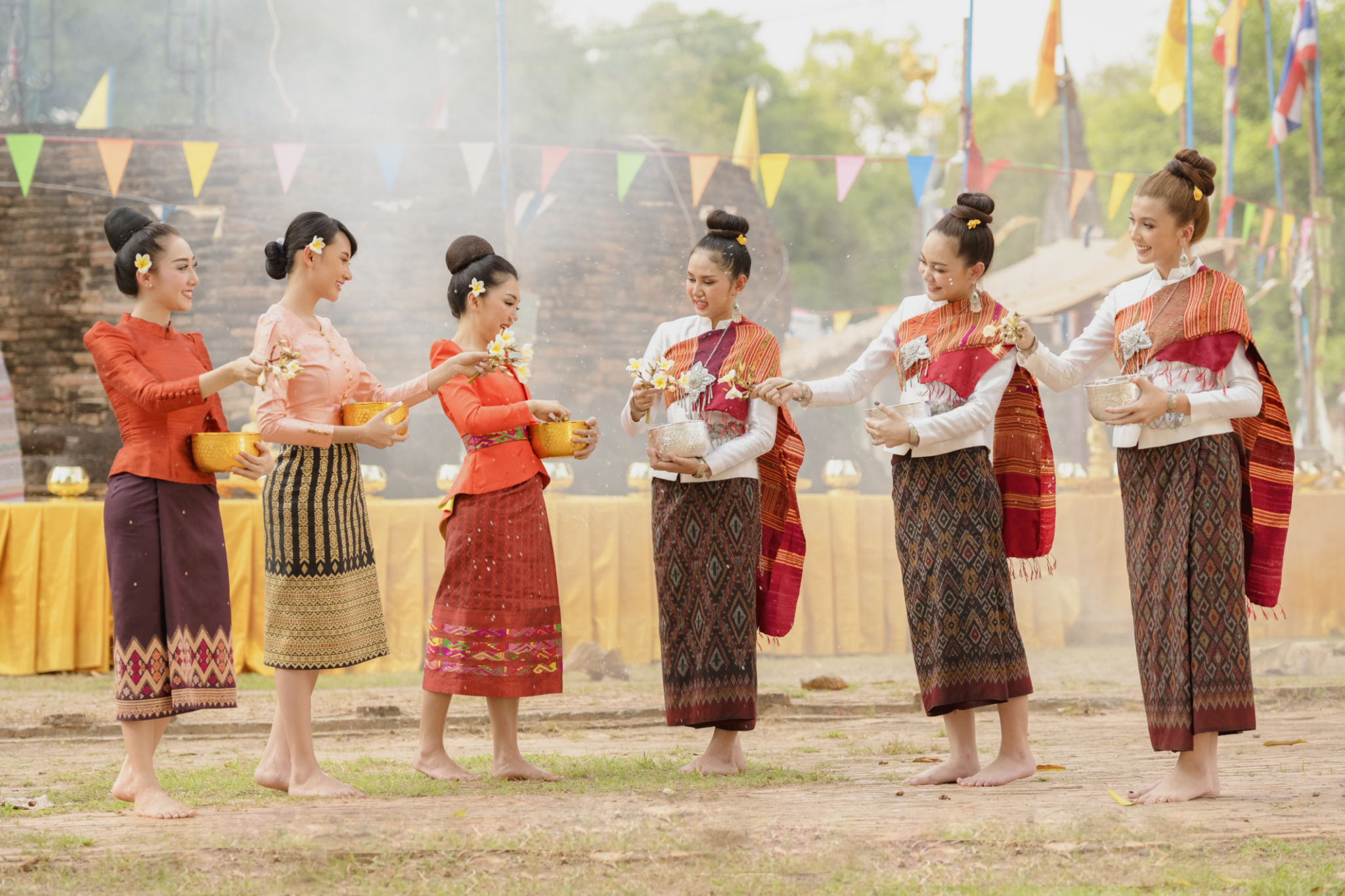Innovative Traditions: Creating Practices That Endure
While our previous exploration of "Traditional Innovation" examined how existing traditions can embrace innovation without losing their essence, this article addresses the complementary challenge: how to deliberately create new traditions that fulfill contemporary needs while possessing the qualities that enable them to endure through time. This practice of developing "Innovative Traditions" requires understanding both the psychological principles that give traditions their power and the design elements that allow innovations to address genuine human needs.
Innovative Traditions are not merely novelties or passing trends. They are intentionally crafted practices, rituals, systems, or frameworks that respond to current circumstances while incorporating the psychological elements that give traditions their staying power. They represent a forward-looking approach to tradition-building rather than simply maintaining or adapting what already exists.
The need for such Innovative Traditions has perhaps never been greater. Rapid technological advancement, social transformation, and environmental challenges create contexts where existing traditions may provide insufficient guidance. Yet our psychological need for meaningful continuity, shared identity, and reliable frameworks remains constant. By understanding how to develop traditions that are both innovative in their response to current conditions and psychologically sound in their structure, we can create practices that genuinely serve human flourishing over time.
The Psychological Foundations of Enduring Traditions
Before examining how to create Innovative Traditions, we must understand what gives traditional practices their psychological resonance and staying power. Research from anthropology, psychology, and neuroscience suggests several key elements:
Meaning-Making and Coherence
Enduring traditions provide cognitive frameworks that help people make sense of their experiences and integrate them into coherent narratives. They offer explanatory systems that address fundamental questions about identity, purpose, and relationship. Neuropsychological research demonstrates that the human brain constantly seeks to create coherent patterns from experience; traditions that facilitate this meaning-making process satisfy a basic cognitive need.
Innovative Traditions must therefore do more than solve practical problems—they must help people interpret their experiences within meaningful frameworks. A corporate ritual that merely celebrates quarterly results will never have the staying power of one that connects individual contributions to larger purpose and identity.
Emotional Resonance
Traditions that endure invariably engage emotions as well as intellect. They create experiences of awe, belonging, joy, reverence, or other powerful emotional states that neurologically enhance memory formation and create positive associations. Research in affective neuroscience shows that emotionally significant experiences receive preferential processing in the brain, making them more likely to be remembered and repeated.
The emotional component of traditions cannot be merely superficial excitement or entertainment. Lasting traditions tap into deeper emotional currents connected to fundamental human experiences—connection to others, recognition of life transitions, gratitude for shared resources, or contemplation of transcendent realities.
Identity Reinforcement
Successful traditions strengthen both individual and collective identity. They provide answers to the questions "Who am I?" and "Where do I belong?" through participatory experiences that connect people to larger social groups and shared values. Social identity theory suggests that these identity-reinforcing functions satisfy fundamental human needs for belonging and differentiation.
For a tradition to endure, it must allow participants to enact valued identities through meaningful participation. The tradition becomes not merely something people do, but an expression of who they are or aspire to be, individually and collectively.
Adaptable Structure
Paradoxically, the traditions that endure longest often contain built-in flexibility that allows them to adapt to changing circumstances while maintaining core elements. Anthropological research reveals that apparently ancient and unchanging traditions have typically undergone substantial evolution while preserving their essential character and function.
This adaptable structure creates a balance between stability and flexibility. Core symbolic elements or underlying principles remain consistent, while specific expressions may evolve in response to changing contexts. This allows the tradition to remain relevant across time and changing circumstances.

Designing Innovative Traditions: Key Principles
Understanding these psychological foundations, how might we intentionally design new traditions with the potential to endure? The following principles synthesize insights from psychology, design thinking, and cultural anthropology to guide the development of Innovative Traditions:
Address Genuine Needs
Innovative Traditions must respond to actual psychological or social needs rather than being created for novelty's sake. These needs may be perennial human concerns (marking life transitions, creating community cohesion) or may emerge from specific contemporary challenges (navigating digital relationships, finding meaning in changing work environments).
The process begins with careful observation and analysis: What needs currently lack adequate traditional frameworks? Where do people experience disorientation, disconnection, or lack of meaning? What transitions or experiences would benefit from structured recognition? Traditions addressing such genuine needs have greater potential longevity than those created primarily for aesthetic or entertainment purposes.
Balance Familiarity and Novelty
Psychologically effective traditions strike a balance between comfortable familiarity and engaging novelty. They incorporate recognizable elements that connect to existing cultural patterns while introducing innovative components that address contemporary circumstances. This balance engages both our need for security and our attraction to novelty.
When designing Innovative Traditions, consider incorporating:
- Familiar symbolic elements in new configurations
- Recognizable rhythms or sequences with contemporary content
- Traditional forms addressing new contexts or challenges
This familiar-yet-fresh quality makes new traditions more immediately accessible while still allowing them to address emerging needs in innovative ways.
Create Participatory Engagement
Traditions that endure typically involve active participation rather than passive observation. They engage multiple senses, require personal investment, and create experiences that cannot be fully replicated through description or digital reproduction. This participatory quality activates embodied cognition—the way physical actions shape our thinking and emotional processing.
Innovative Traditions should therefore include elements that:
- Engage multiple sensory channels
- Require meaningful personal contribution
- Create shared physical experiences
- Produce tangible outcomes or transformations
These participatory elements make traditions more memorable and meaningful than purely intellectual or observational experiences.
Establish Symbolic Depth
Enduring traditions contain symbolic elements that operate on multiple levels simultaneously. They incorporate symbols that connect immediate experiences to deeper meanings, allowing the tradition to function at both practical and metaphorical levels. This symbolic depth creates richness that rewards repeated engagement and reflection.
When designing Innovative Traditions, develop symbolic elements that:
- Connect concrete actions to abstract principles
- Link individual experiences to collective narratives
- Reference archetypal patterns or universal experiences
- Allow for both immediate understanding and deeper interpretation
This symbolic layering ensures the tradition remains meaningful across different levels of engagement and understanding.
Build in Evolution Mechanisms
Perhaps most importantly, Innovative Traditions should incorporate mechanisms for thoughtful evolution rather than rigid preservation. These mechanisms might include:
- Periodic communal reflection on the tradition's meaning and practice
- Designated roles for both preserving core elements and suggesting adaptations
- Regular assessment of how well the tradition serves its intended purposes
- Clear distinction between essential principles and specific expressions
These evolution mechanisms allow the tradition to maintain relevance through changing circumstances while preserving its core identity and function.

Case Studies in Innovative Traditions
The following case studies illustrate how these principles have been applied to create traditions that address contemporary needs while incorporating the psychological elements that give traditions staying power.
Corporate Retrospectives: Beyond Problem-Solving
Software development teams have created an Innovative Tradition in the form of structured retrospective meetings that go beyond mere problem-solving. Beginning as simple efficiency measures, the most effective retrospectives have evolved into richly meaningful traditions that address deeper needs for learning, recognition, and community.
These retrospectives typically include ritualized elements like:
- Opening ceremonies that shift attention from immediate tasks to reflective thinking
- Structured formats that ensure all voices are heard and valued
- Symbolic representations of progress, challenges, and insights
- Closing rituals that acknowledge contributions and reinforce shared identity
The most successful retrospective traditions balance structure and flexibility, allowing teams to adapt specific practices while maintaining core principles. They incorporate symbolic depth by connecting immediate project experiences to larger narratives about growth, collaboration, and purpose. And importantly, they create participatory experiences that engage team members emotionally as well as intellectually.
These qualities have allowed retrospectives to evolve from simple management techniques into genuine traditions that teams value for their meaning as well as their practical benefits. The tradition continues to evolve as teams adapt it to remote work environments, cross-cultural contexts, and changing organizational structures.
Digital Sabbaths: Reinventing Ancient Wisdom
As digital technologies increasingly dominate contemporary life, many individuals and communities have developed "Digital Sabbath" traditions that adapt ancient practices of periodic rest to address modern challenges of constant connectivity and attention fragmentation.
These Innovative Traditions typically include:
- Designated time periods (often weekly) for disconnection from digital devices
- Rituals marking the beginning and end of the technology-free period
- Alternative activities that promote presence, connection, and reflection
- Communal practices that reinforce shared values around technology use
What makes these practices innovative traditions rather than merely helpful habits is their intentional incorporation of ritual elements, symbolic meaning, and community reinforcement. They address genuine contemporary needs while drawing on traditional wisdom about the importance of rhythmic alternation between engagement and rest.
The most enduring Digital Sabbath practices build in evolution mechanisms, allowing practitioners to adapt specific practices as technologies change while maintaining the core principles. They engage participants in ongoing reflection about the relationship between technology, attention, and wellbeing rather than prescribing rigid rules.
New Grief Rituals: Addressing Contemporary Loss
Traditional mourning practices evolved in contexts where death typically occurred at home, bodies remained present for some period, and communities shared immediate geographic proximity. Contemporary circumstances—including geographic dispersion of families, medical management of death, and digital relationships—have created needs for new mourning traditions.
Innovative grief rituals have emerged that address these contemporary realities while incorporating the psychological elements that make mourning traditions effective. These include:
- Online memorial services that enable geographically dispersed communities to gather
- Digital legacy projects that collect and preserve memories and messages
- Rituals for acknowledging ambiguous losses like dementia or estrangement
- Ceremonies marking the transformation of digital spaces after loss
These Innovative Traditions address genuine needs created by changing circumstances around death and loss. They incorporate symbolic elements that connect concrete actions to deeper meanings around continuity, remembrance, and transformation. The most effective new grief rituals also engage multiple sensory channels despite digital mediation, perhaps including synchronized physical actions, shared music, or parallel creation of tangible memorial objects.
While still evolving, these new grief rituals demonstrate how Innovative Traditions can address contemporary needs while incorporating the psychological elements that give mourning practices their power to facilitate healthy grief processing and community support.

Implementing Innovative Traditions: Practical Guidance
Creating traditions that genuinely endure requires more than good initial design. The following implementation approaches increase the likelihood that Innovative Traditions will take root and flourish over time.
Start Small and Allow Organic Growth
Rather than attempting to launch fully formed traditions, begin with modest implementations that address clear needs. Allow the tradition to develop organically through repeated practice and community engagement. This evolutionary approach tends to produce more resilient traditions than top-down impositions of elaborate new rituals.
This gradual development allows participants to develop ownership of the tradition through their contributions to its evolution. It also provides opportunities to observe which elements resonate most strongly and which might need adjustment—essential feedback for refining the tradition's design.
Engage Multiple Generations
Traditions gain strength when they engage participants across age groups, with each generation playing meaningful roles. When developing Innovative Traditions, consider how different age groups might participate and contribute, creating opportunities for inter-generational transmission of values and practices.
This multi-generational engagement serves several purposes:
- It enriches the tradition with diverse perspectives and experiences
- It creates natural pathways for transmitting the tradition through time
- It connects the new tradition to existing generational wisdom
- It ensures the tradition addresses needs across the lifespan
Traditions that engage only a single generation or life stage typically lack the depth and continuity needed for long-term endurance.
Document Intentions and Principles
While traditions naturally evolve, documenting the original intentions and core principles helps maintain essential coherence through changes in specific practices. This documentation need not be rigid or prescriptive but should articulate the tradition's purpose, underlying values, and key symbolic elements.
This documentation serves as both anchor and compass—providing stability while guiding thoughtful adaptation. It helps new participants understand the tradition's deeper meaning rather than focusing solely on its external forms. It also provides a reference point for evaluating potential modifications, ensuring that changes enhance rather than diminish the tradition's core purpose.
Build Reflective Practice
Incorporate regular opportunities for participants to reflect on their experience of the tradition, its meaning in their lives, and its evolution over time. This reflective component strengthens the tradition's psychological impact while creating natural feedback mechanisms for appropriate adaptation.
Reflective practices might include:
- Storytelling about significant experiences of the tradition
- Explicit discussion of how the tradition's meaning evolves in changing contexts
- Documentation of the tradition's history and development
- Periodic reassessment of how well the tradition serves its intended purposes
This reflection transforms mechanical repetition into meaningful participation, deepening engagement while ensuring the tradition remains vital and relevant.
Connect to Larger Cultural Narratives
Innovative Traditions gain strength when they connect to broader cultural narratives and values rather than existing in isolation. Consider how new traditions might reference, complement, or thoughtfully revise existing cultural frameworks, creating continuity between innovation and established values.
This connection to larger narratives helps new traditions feel like organic developments rather than arbitrary impositions. It provides contextual support that helps the tradition make sense within participants' broader understanding of their identity and community.

Ethical Considerations in Creating Innovative Traditions
The deliberate creation of new traditions carries significant ethical responsibilities. The following considerations should guide the development process to ensure Innovative Traditions genuinely serve human flourishing.
Respect Cultural Heritage
When drawing inspiration from existing cultural traditions, developers of Innovative Traditions must show appropriate respect for their origins. This includes:
- Acknowledging sources rather than appropriating practices without recognition
- Understanding the original context and meaning of borrowed elements
- Considering the perspectives of communities from whom traditions originate
- Distinguishing between closed sacred practices and open cultural expressions
This respectful approach enriches new traditions with authentic connection to cultural wisdom while avoiding exploitative appropriation.
Balance Structure and Freedom
Traditions, by nature, create structure and expectations. However, overly rigid traditions can become oppressive rather than supportive. Innovative Traditions should balance communal structure with individual agency, creating frameworks that guide without constraining authentic personal expression.
The healthiest traditions serve as resources that individuals can engage with meaningfully rather than requirements imposed without regard for personal circumstances or needs. They create optional but valued pathways rather than mandatory performance metrics.
Consider Accessibility and Inclusion
For traditions to serve communities well, they must be accessible to diverse participants. When designing Innovative Traditions, consider:
- Physical accessibility for participants with different abilities
- Economic accessibility that doesn't require excessive resources
- Cultural accessibility across different background experiences
- Cognitive accessibility for different processing styles and capacities
Traditions that inadvertently exclude significant community members undermine their own purpose of creating shared meaning and connection.
Maintain Authenticity of Purpose
Perhaps most importantly, Innovative Traditions should be developed with genuine intent to serve human needs rather than to manipulate behavior or manufacture synthetic meaning. Traditions designed primarily as marketing tools, brand experiences, or behavior modification techniques typically lack the authenticity needed for meaningful endurance.
The most powerful traditions emerge from authentic human experiences and genuine community needs. While they may provide secondary benefits to organizations or institutions, their primary purpose must be human flourishing rather than organizational advantage.

Conclusion: The Ongoing Creation of Cultural Heritage
The development of Innovative Traditions represents an important cultural responsibility. We are not merely passive recipients of traditional heritage but active participants in its ongoing creation. By thoughtfully designing new traditions that address contemporary needs while incorporating the psychological elements that give traditions their power, we contribute to cultural evolution that honors both past wisdom and present realities.
The most successful Innovative Traditions achieve a remarkable balance: they feel simultaneously new in their responsiveness to current circumstances and ancient in their connection to enduring human needs and experiences. They provide fresh solutions while tapping into timeless patterns of meaning-making, community building, and identity formation.
As we face unprecedented social, technological, and environmental changes, the need for such Innovative Traditions becomes increasingly urgent. Existing traditional frameworks may provide insufficient guidance for navigating digital relationships, global interdependence, environmental stewardship, or rapid technological transformation. By applying the principles outlined in this article, we can develop new traditions that offer meaningful structure for these emerging domains while incorporating the psychological wisdom that has given traditional practices their enduring power.
The art of developing Innovative Traditions thus becomes not merely an interesting cultural project but an essential contribution to human wellbeing in changing times. It allows us to create practices that are both thoroughly contemporary in their relevance and deeply traditional in their psychological wisdom—innovations with the potential to become the valued traditions of future generations.
